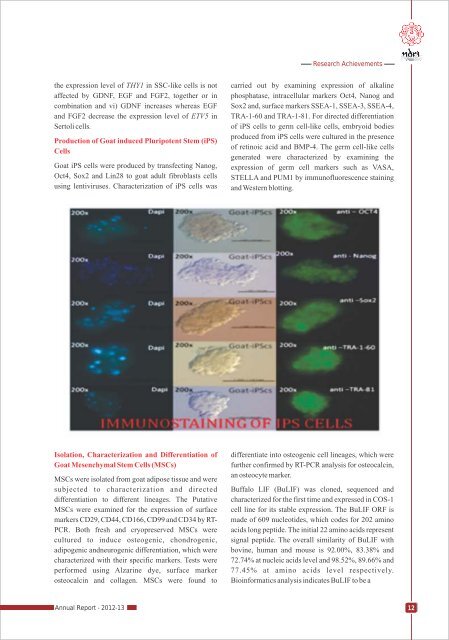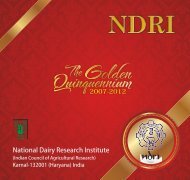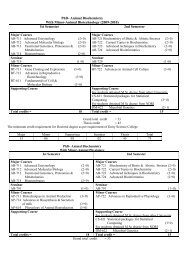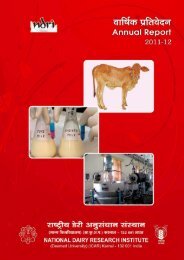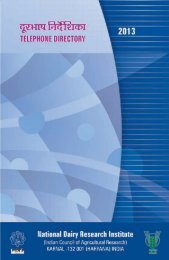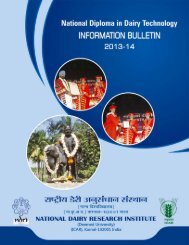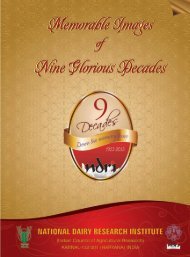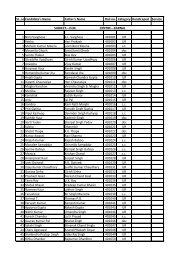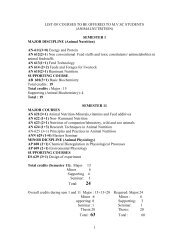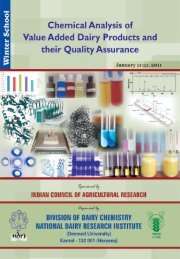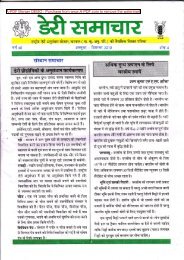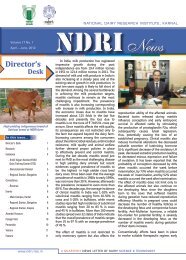executive summary - National Dairy Research Institute
executive summary - National Dairy Research Institute
executive summary - National Dairy Research Institute
You also want an ePaper? Increase the reach of your titles
YUMPU automatically turns print PDFs into web optimized ePapers that Google loves.
<strong>Research</strong> Achievements<br />
the expression level of THY1 in SSC-like cells is not<br />
affected by GDNF, EGF and FGF2, together or in<br />
combination and vi) GDNF increases whereas EGF<br />
and FGF2 decrease the expression level of ETV5 in<br />
Sertoli cells.<br />
Production of Goat induced Pluripotent Stem (iPS)<br />
Cells<br />
Goat iPS cells were produced by transfecting Nanog,<br />
Oct4, Sox2 and Lin28 to goat adult fibroblasts cells<br />
using lentiviruses. Characterization of iPS cells was<br />
carried out by examining expression of alkaline<br />
phosphatase, intracellular markers Oct4, Nanog and<br />
Sox2 and, surface markers SSEA-1, SSEA-3, SSEA-4,<br />
TRA-1-60 and TRA-1-81. For directed differentiation<br />
of iPS cells to germ cell-like cells, embryoid bodies<br />
produced from iPS cells were cultured in the presence<br />
of retinoic acid and BMP-4. The germ cell-like cells<br />
generated were characterized by examining the<br />
expression of germ cell markers such as VASA,<br />
STELLA and PUM1 by immunofluorescence staining<br />
and Western blotting.<br />
Isolation, Characterization and Differentiation of<br />
Goat Mesenchymal Stem Cells (MSCs)<br />
MSCs were isolated from goat adipose tissue and were<br />
subjected to characterization and directed<br />
differentiation to different lineages. The Putative<br />
MSCs were examined for the expression of surface<br />
markers CD29, CD44, CD166, CD99 and CD34 by RT-<br />
PCR. Both fresh and cryopreserved MSCs were<br />
cultured to induce osteogenic, chondrogenic,<br />
adipogenic andneurogenic differentiation, which were<br />
characterized with their specific markers. Tests were<br />
performed using Alzarine dye, surface marker<br />
osteocalcin and collagen. MSCs were found to<br />
differentiate into osteogenic cell lineages, which were<br />
further confirmed by RT-PCR analysis for osteocalcin,<br />
an osteocyte marker.<br />
Buffalo LIF (BuLIF) was cloned, sequenced and<br />
characterized for the first time and expressed in COS-1<br />
cell line for its stable expression. The BuLIF ORF is<br />
made of 609 nucleotides, which codes for 202 amino<br />
acids long peptide. The initial 22 amino acids represent<br />
signal peptide. The overall similarity of BuLIF with<br />
bovine, human and mouse is 92.00%, 83.38% and<br />
72.74% at nucleic acids level and 98.52%, 89.66% and<br />
77.45% at amino acids level respectively.<br />
Bioinformatics analysis indicates BuLIF to be a<br />
Annual Report - 2012-13<br />
12


